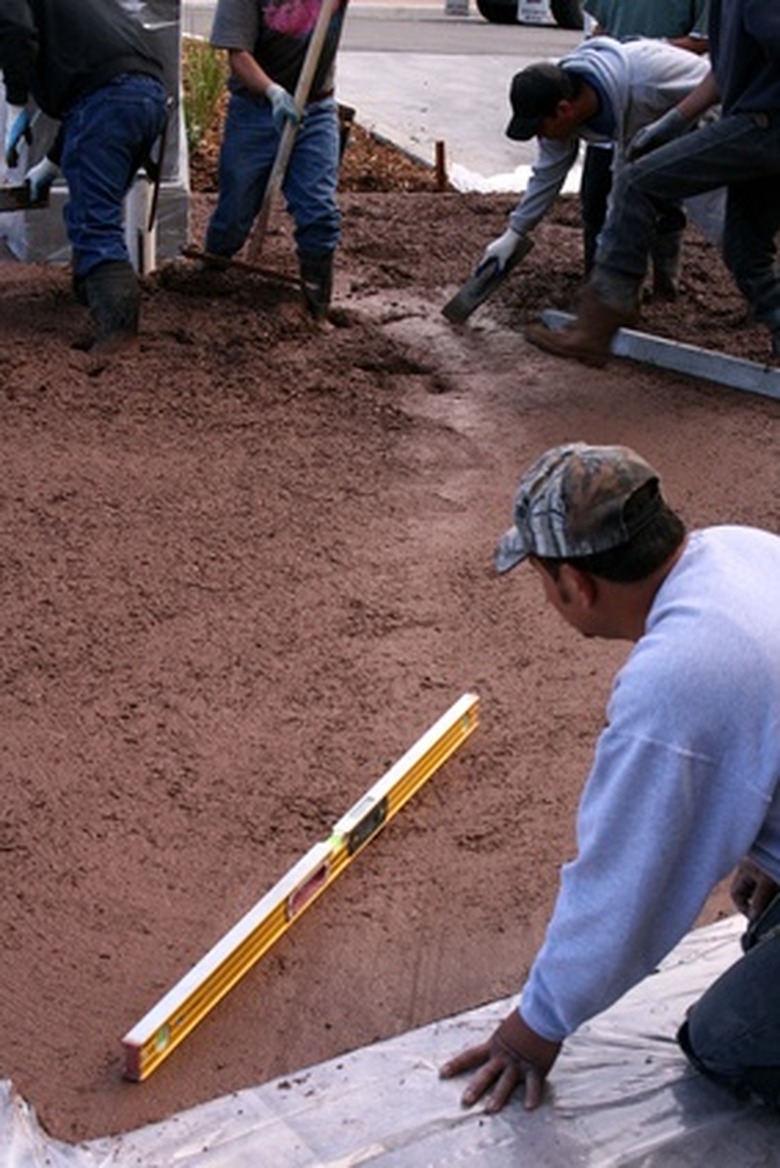How To Repair Acid Stained Concrete
Things Needed
- Floor stripper
- Buffer
- Scrub pad
- Mouth and nose mask
- Goggles
- Gloves
- Sprayer
- Acid stain
- Medium bristle brush
- Wood or concrete stains
- Water based sealer
- Sponge
- Concrete sealer
Repairing acid stained concrete can be a challenging process that requires repeating a number of steps that were taken when the acid stain was first applied. Many factors–including concrete density and texture–influence how successful the repair project will be, therefore, it is important to follow all procedures of the process as carefully as possible. Be sure to wear protective clothing when dealing with acid.
Step 1
Clean the floor surface of tape adhesive, paint, sealers, compound or patching materials and chalk-lines by applying floor stripper, according to the label directions, with a buffing machine and scrub pad. Floor stripper can be purchased and a buffing machine can be rented from home improvement stores. If scratches or discolorations remain, it may be necessary to use the buffer to strip the floor down until all scratches disappear and the finish is removed. A mouth and nose mask, goggles and gloves should be worn when handling all chemicals.
- Repairing acid stained concrete can be a challenging process that requires repeating a number of steps that were taken when the acid stain was first applied.
- If scratches or discolorations remain, it may be necessary to use the buffer to strip the floor down until all scratches disappear and the finish is removed.
Step 2
Conduct a test by spraying the concrete, section by section, with water. Concrete density and texture varies widely, sometimes even within the same flooring area. If the water beads or runs to a lower spot, this will probably occur with the stain that is applied to repair the floor. These factors must be taken into account when determining the amount of stain applied and by what method the stain will be worked into the floor.
Step 3
Do not use mops, squeegees or rollers to apply the stain since they will leave trailing marks on the floor. Use a sprayer, rated for acid use and without metal parts, in a circular pattern. Sprayers appropriate for this process are available at home improvement stores. Follow with vigorous brushing with a medium-bristle brush to work the stain into the floor.
- Conduct a test by spraying the concrete, section by section, with water.
- Follow with vigorous brushing with a medium-bristle brush to work the stain into the floor.
Step 4
Apply the same acid stain that was used when the floor was initially stained. Let it set overnight and use a mop to remove the excess. It may be necessary to apply two coats using the same process. Follow the label directions carefully since factors such as temperature and humidity can affect how the floor will accept the stain.
Step 5
Repair the damaged floor with the option of adding additional color. Use water-based wood or concrete stains, by following label directions, available from home improvement stores. Mix the coloring with a water-based sealer and apply separately in several coats, giving special attention to areas that do not accept the coloring easily. Coloring may be sponged into difficult areas. Allow the coloring to set into the floor for the time specified on the package label.
- Apply the same acid stain that was used when the floor was initially stained.
- Mix the coloring with a water-based sealer and apply separately in several coats, giving special attention to areas that do not accept the coloring easily.
Step 6
Seal the floor with a concrete floor sealer, available at a home improvement stores, according to label directions.
Tip
Do not seal the floor until the color is satisfactory or the process may have to be repeated.
Warning
Do not use a sprayer that has metal parts. The acid stain will dissolve the metal and the color of the concrete will be affected.
